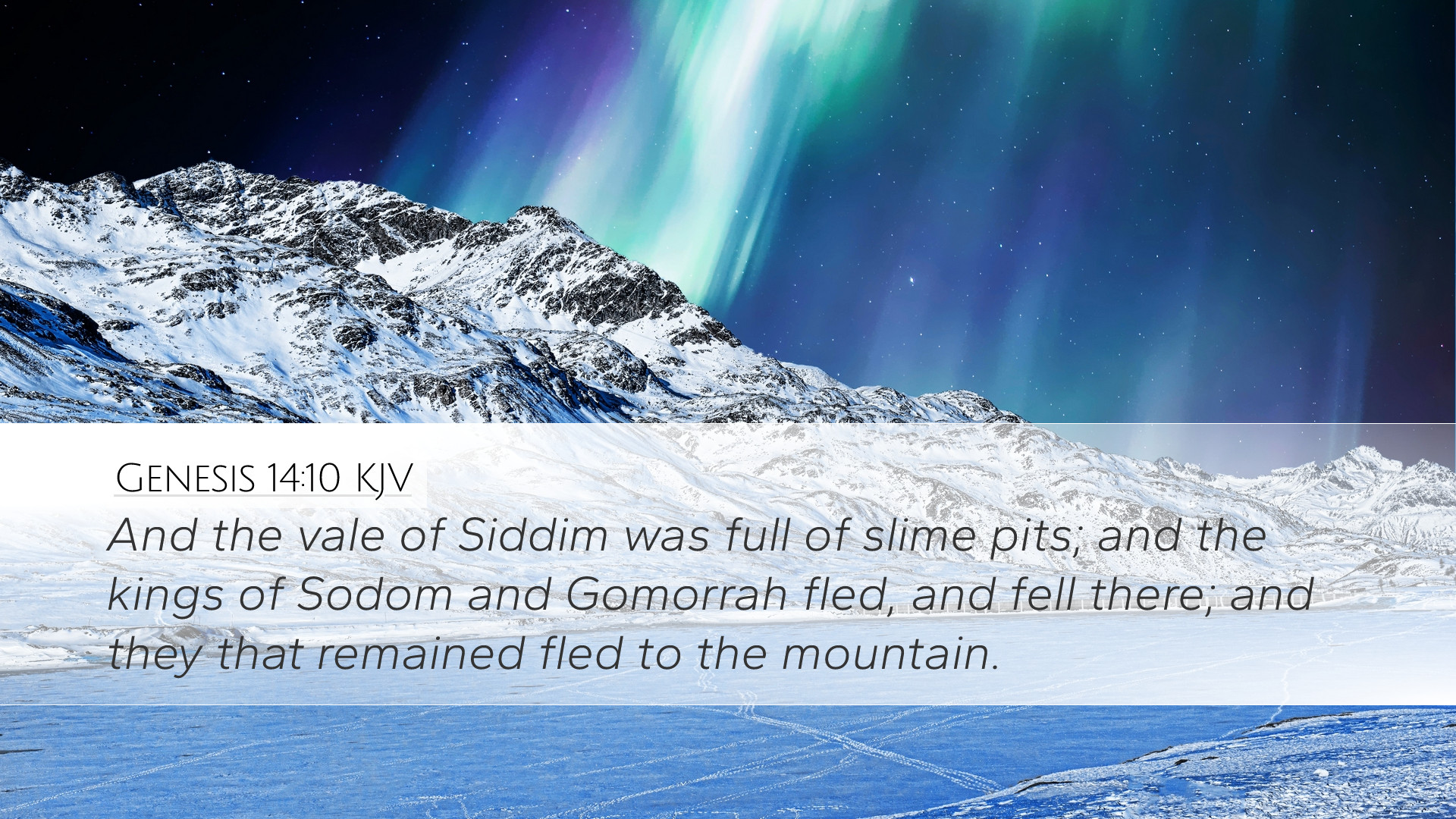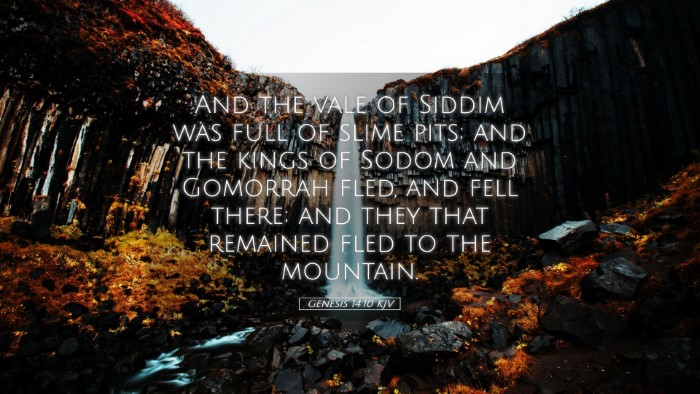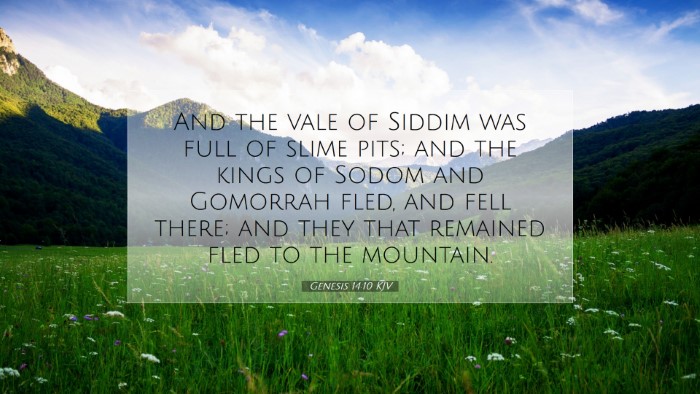Genesis 14:10 - Commentary
Verse: "And the vale of Siddim was full of slimepits; and the kings of Sodom and Gomorrah fled, and fell there; and they that remained fled to the mountain."
Contextual Overview
This verse occurs within the narrative of Abraham's encounter with the kings during the time when Sodom and Gomorrah faced an unprecedented invasion. The historical and geographical significance of the vale of Siddim plays a crucial role in understanding the dynamics at play during this event.
Geographical Significance
The vale of Siddim, identified often with the region near the Dead Sea, was characterized by its natural features—specifically the slimepits. Commentaries highlight that these pits could refer to both natural tar pits as well as a metaphorical description of the moral decay of the cities involved.
- Matthew Henry: Explains that the slimepits symbolize the treachery and sins of Sodom, contributing to its eventual downfall.
- Albert Barnes: Notes the geographical hazards surrounding the cities, emphasizing how they contributed to the chaotic retreat of the kings.
- Adam Clarke: Suggests that the presence of the slime signifies the vanity and corruption pervasive in Sodom and Gomorrah.
Theological Implications
This passage speaks volumes not only to historical events but also to theological themes of divine judgment and the deliverance of the righteous, personified through Abraham’s actions. It foreshadows the catastrophic judgment awaiting Sodom.
- Judgment and Mercy: The divine judgment against Sodom and Gomorrah serves as a warning regarding sin and corruption.
- Abraham as Intercessor: Preceding this verse, Abraham’s intercession illustrates the theme of God’s mercy amidst judgment.
Liturgical Reflection
This scripture offers a moment for reflection within church settings, emphasizing the consequences of straying from God’s path. Pastors might encourage congregations to consider their own 'slimepits'—areas in their lives that may represent sin or distraction from God.
Character Analysis
The flight of the kings of Sodom and Gomorrah exhibits their cowardice and despair in the face of judgment. They flee to the mountains, symbolic of seeking refuge yet ultimately failing to find safety.
- Dynamics of Leadership: The failure of these kings prompts a reflection on what true leadership entails in times of crisis.
- Contrast with Abraham: Abraham's courageous reliance on God starkly contrasts with the fear exhibited by the regional rulers.
Lessons for Today
For modern believers and scholars, this passage serves as a potent reminder of the importance of integrity, steadfastness in faith, and the necessity of divine reliance amidst chaos.
- Self-Examination: Reflecting on personal integrity in leadership roles.
- Community Responsibility: Encouraging communities to support each other in times of moral decline.
Conclusion
Genesis 14:10 not only recounts a historical event but also encourages deep theological discussion around the nature of sin, judgment, and the character of God as merciful and just. As we study these dimensions, we draw nearer to understanding God’s continual call for righteousness.


